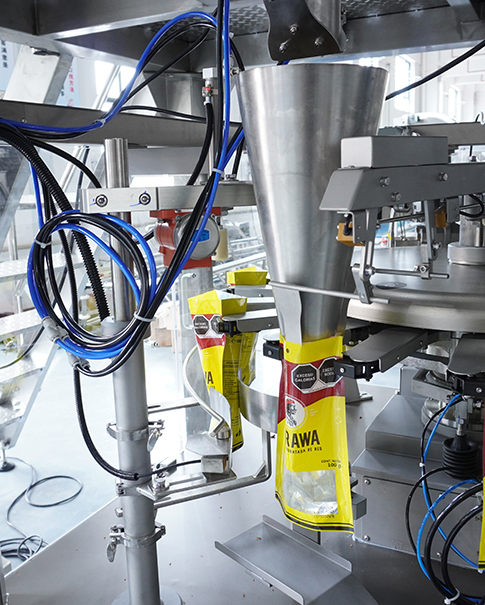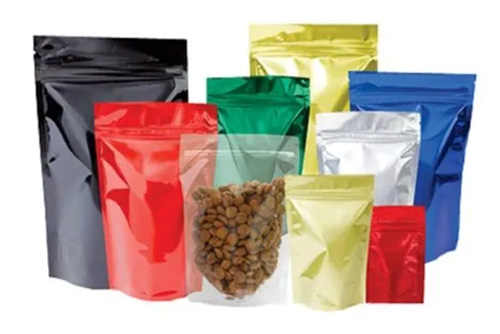Working Principle and Core Components Of Doypack Packaging Machines
Oct 17, 2025
As an efficient and precise automated device, a doypack packaging machine's core mission is to automatically complete a series of operations, including bag removal, filling, and sealing, for premade bags (such as stand up pouches, flat bags, and gusseted bags). Its workflow resembles the tireless work of a skilled worker, with each movement precisely coordinated. Together, they form a continuous, efficient packaging production line.
The basic workflow and the synergy between its core components can be understood through the following key steps.
1. Bag Removal and Separation
Workflow: First, a stack of premade bags is placed in a bag storage area. A bag removal device (typically a robotic arm equipped with vacuum suction cups) moves to the bag storage area, applies negative pressure to the top bag, and then precisely removes it and transfers it to the bag opening station.
The core of this process is the vacuum generation system and bag storage area. The vacuum suction cups ensure stable and reliable bag removal. The sophisticated bag storage area design accommodates bags of varying sizes and materials, ensuring that only one bag is separated at a time. This prevents double or multiple bagging. This is the primary prerequisite for stable production.
2. Bag Opening
Workflow: After the bag arrives at the bag opening station, it needs to be opened in preparation for filling. Mechanical grippers grasp the sides of the bag. Then, a special device (which may be counter-moving suction cups, bag-opening grippers, or a retractable "bag opener") extends into the bag opening and opens it.
The bag opening device is key to automation. It typically combines a bag-gripping robot with a bag-opening suction cup. For bags prone to sticking or lightweight, an air blowing device may also be included. By blowing a small amount of air into the bag opening, it assists in separating and opening the bag, ensuring an unobstructed filling path.
3. Weighing and Filling
Workflow: Once the bag opening is stably opened, the device sends a signal, prompting the filling machine to immediately take action, injecting a predetermined amount of product (such as powder, granules, liquid, or bulk) into the bag through the dispensing nozzle.
This is the key step in determining packaging accuracy. Metering systems (such as high-precision scales, screw dosing machines, liquid pumps, or volumetric cups) ensure that each bag meets the specified weight or volume. The design of the filling mechanism is also crucial and needs to be optimized based on the product's characteristics (such as flowability, fragility, and adhesiveness) to prevent dust, dripping, and damage to the product.
4. Venting and Sealing
Workflow: For products that require freshness preservation (such as potato chips and coffee), after filling and before sealing, the equipment performs vacuum evacuation and/or fills the bag with a protective gas such as nitrogen. The bag opening is then cleaned and smoothed before being conveyed to the heat sealing unit.
This step relies on the heat sealing system. Under precisely controlled temperature, pressure, and time, the heat sealing strip heats and fuses the heat sealing material inside the bag opening, forming a secure seal. The quality of the seal directly determines the product's shelf life and leak-proof performance.
5. Forming and Output
Workflow: After sealing, the bag is released and transported via a conveyor belt. During the delivery process, the bags may pass through a shaping mechanism to flatten or reshape them, giving them a smoother and more aesthetically pleasing appearance for subsequent cartoning and palletizing.
The conveyor system and shaping mechanism are the final safeguards. They ensure that finished products leave the machine in a neat and uniform manner, laying the foundation for subsequent automated processing steps such as labeling, cartoning, and robotic palletizing.
In summary, the premade bag packing machine, through these five interconnected and precise steps, transforms individual premade bags and bulk products into uniformly packaged products, perfectly demonstrating the unparalleled pursuit of efficiency, precision, and reliability in modern industrial automation.


